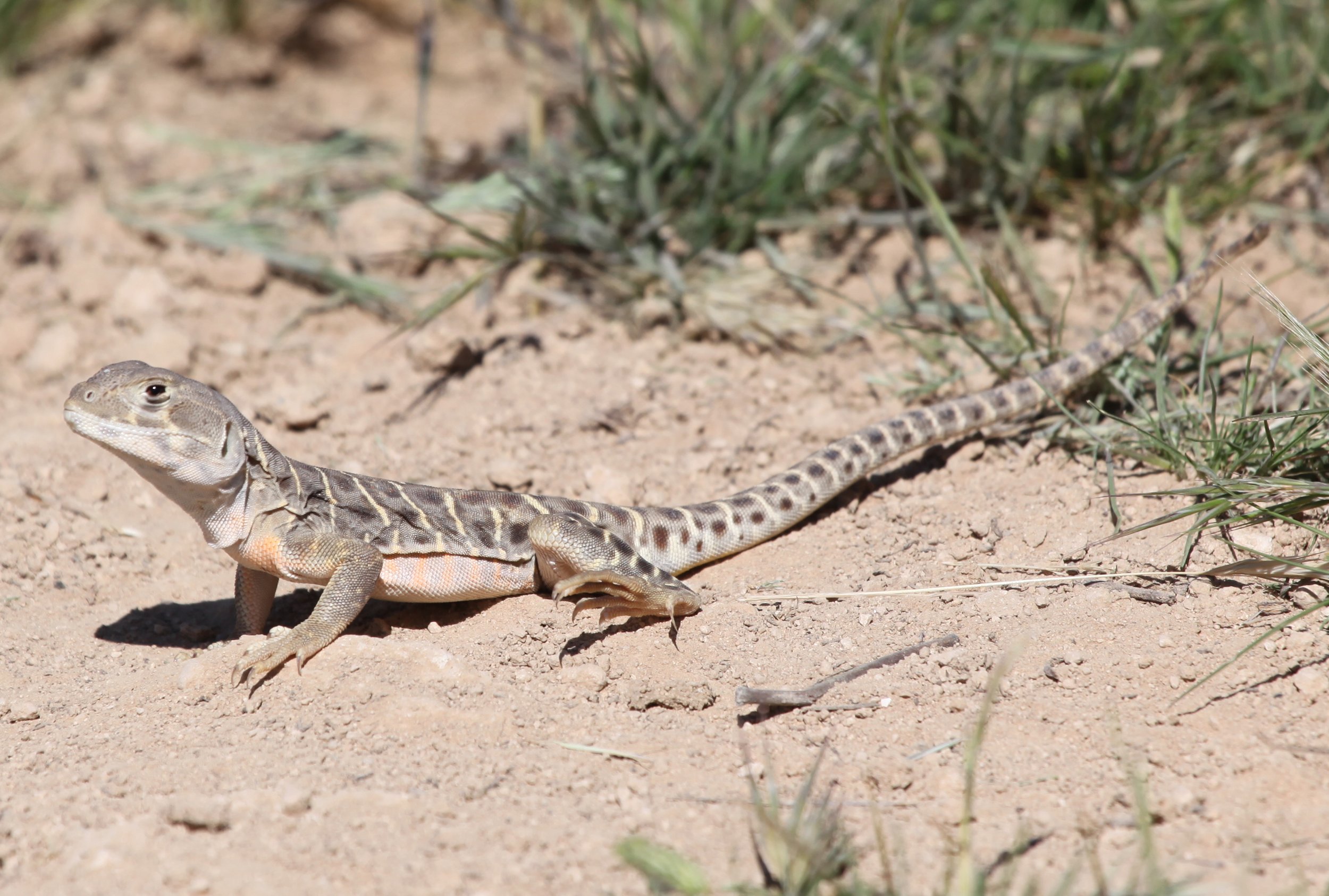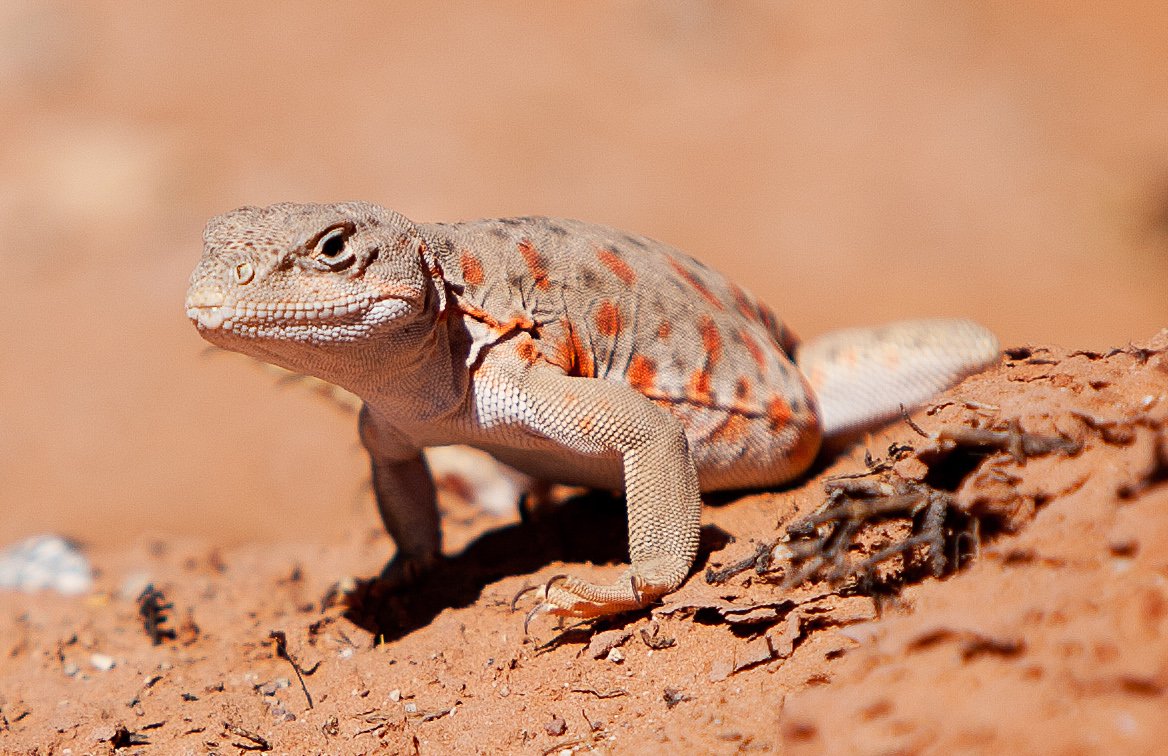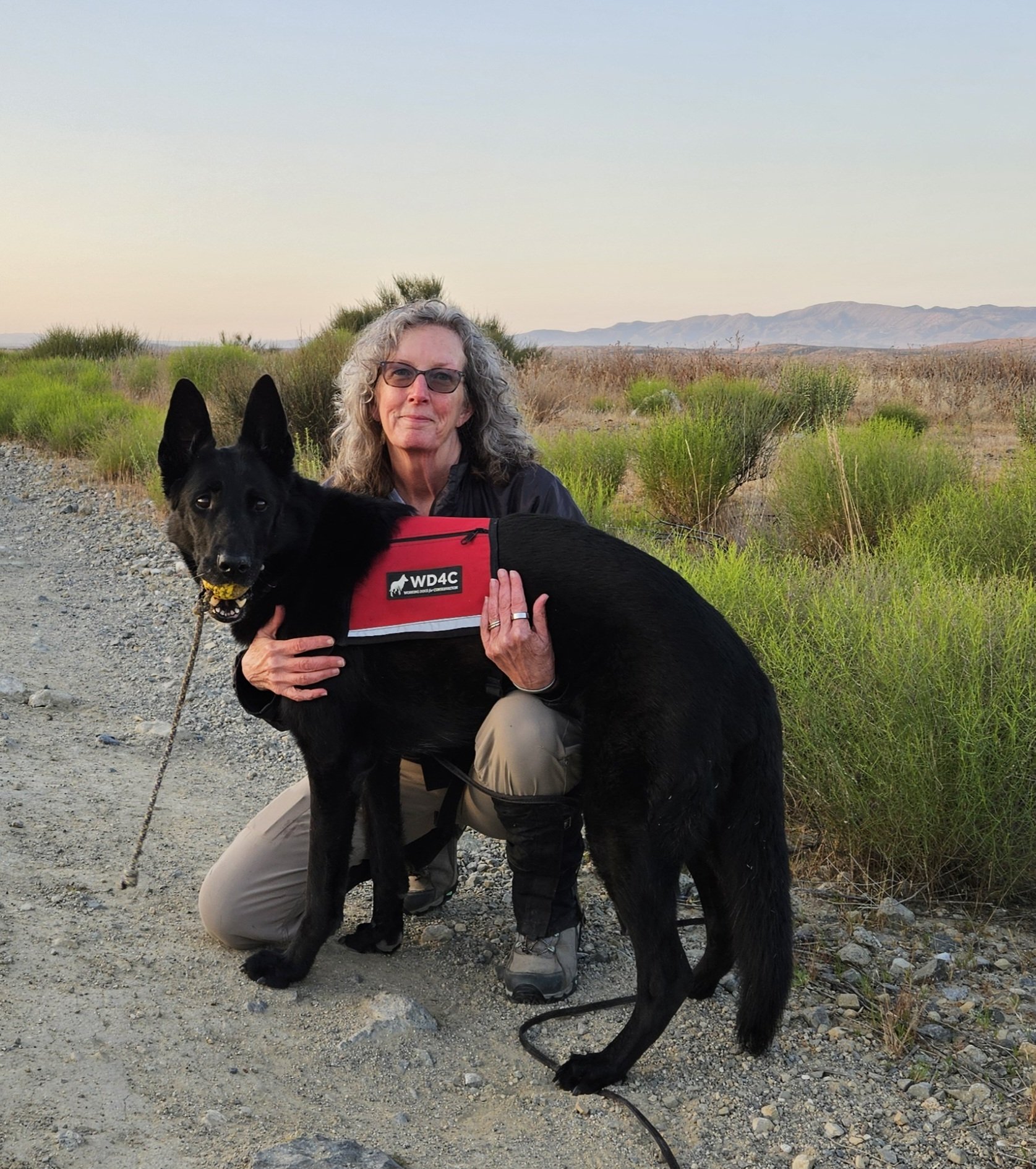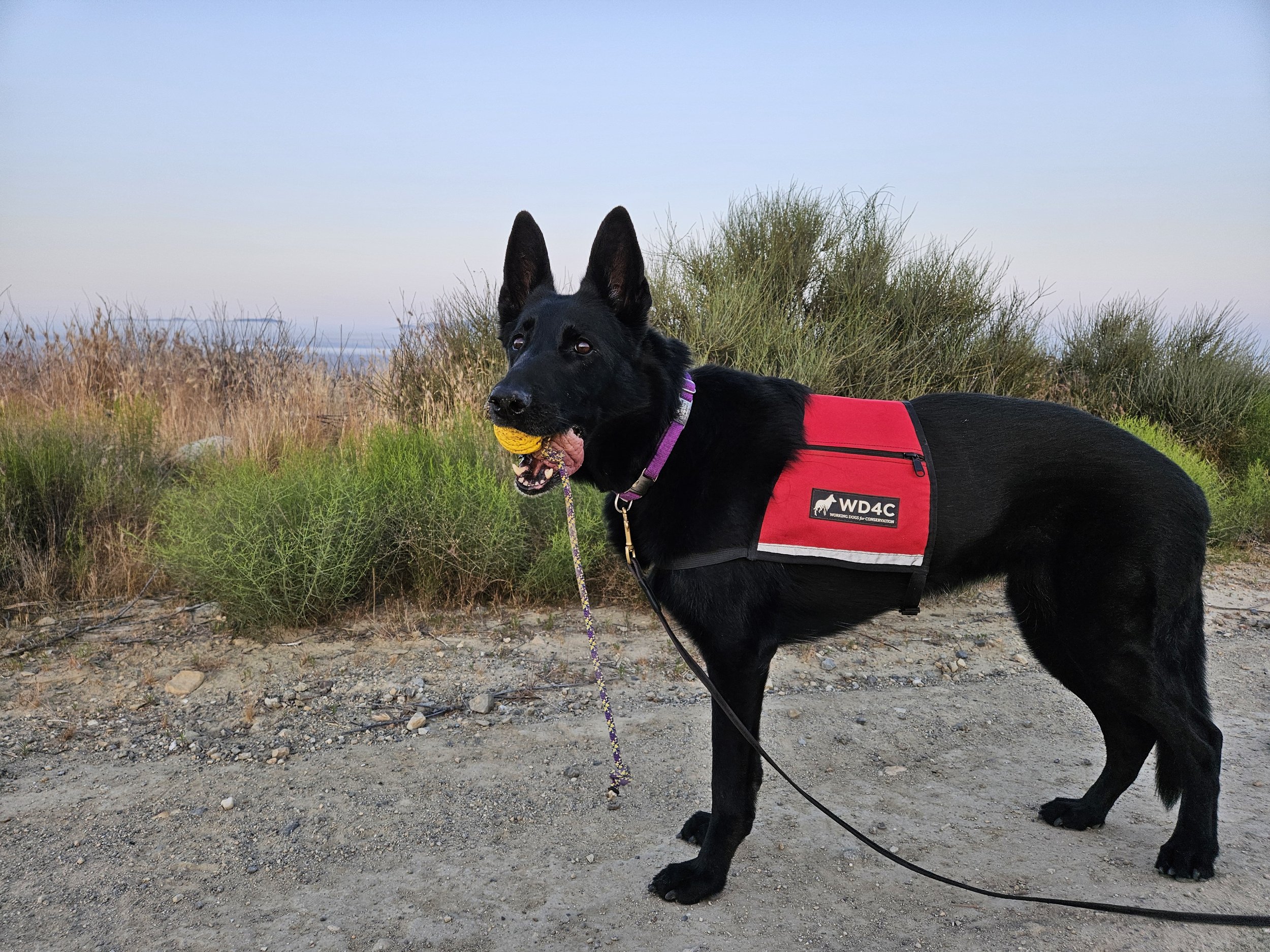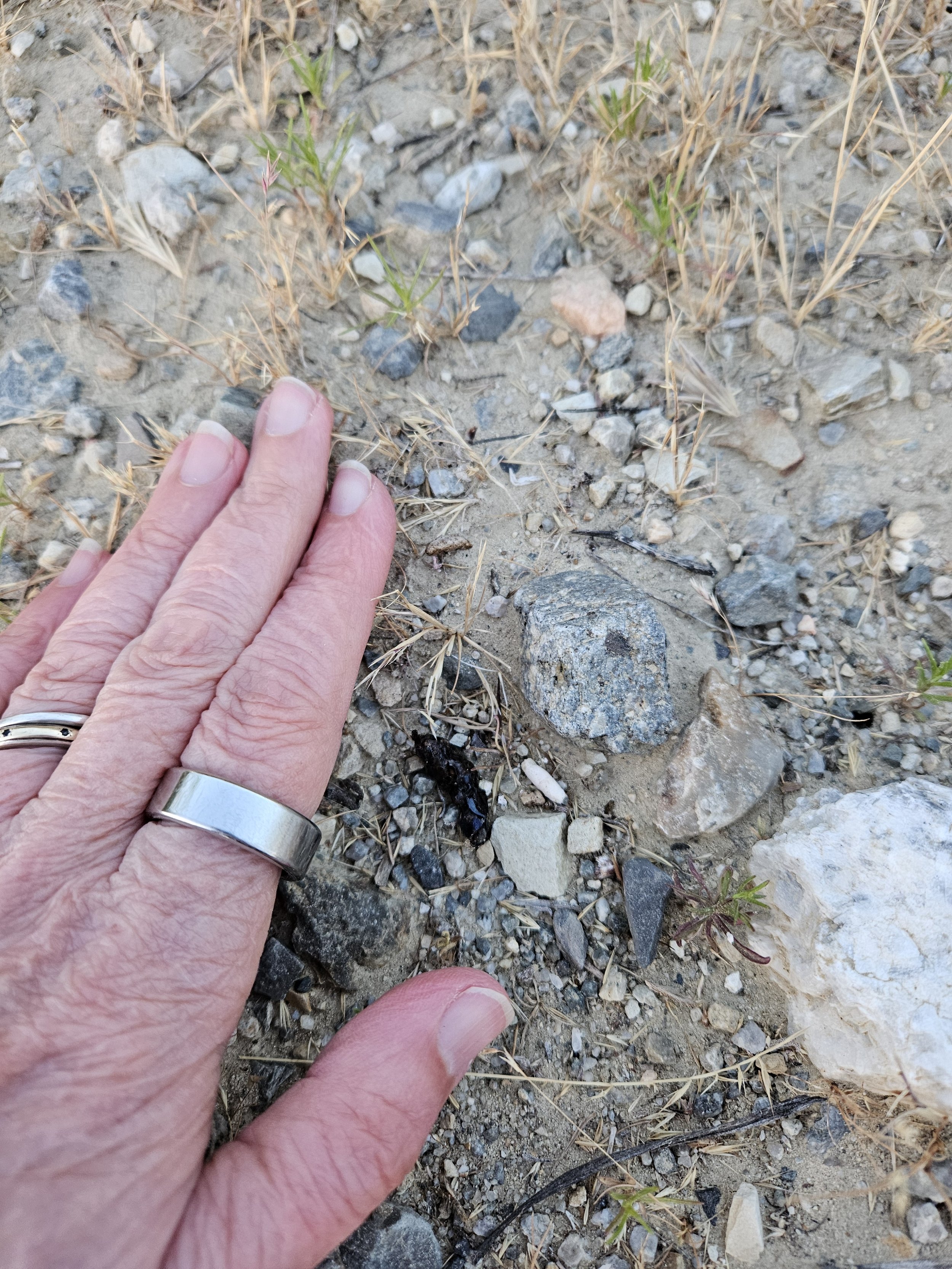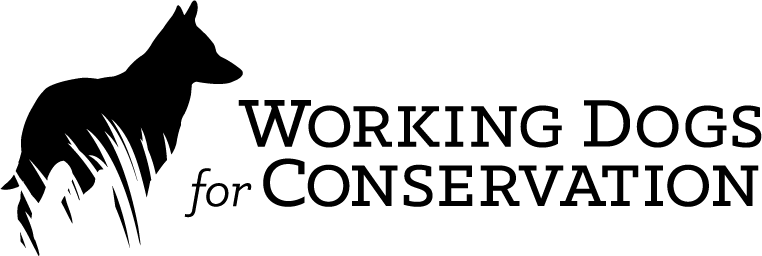
OUR WORK: ECOLOGICAL MONITORING
Blunt-Nosed Leopard Lizard
-
California, USA
-
To find the scat of endangered lizards for further study and lab analysis to learn all we can about these challenging to study species
-
Scat of 3 lizard species - blunt-nosed leopard lizard (Gambelia sila; federally protected), western whiptail lizard (Aspidoscelis tigris), and Blainville's horned lizard (Phrynosoma blainvillii)
-
Bureau of Land Management, University of California-Davis
WD4C is a leader in this specialized area of research, with over a decade of experience developing search strategies tailored to the unique challenges of locating tiny lizard scat in this arid environment.
Since 2011, Working Dogs for Conservation (WD4C) has led a multi-year, multi-partner effort to develop and refine the use of detection dogs to locate lizard scat in central California’s San Joaquin Valley. This innovative work is focused on finding scats for genetic analysis from three sympatric (or similar) lizard species whose scats are indistinguishable in the field - the federally protected blunt-nosed leopard lizard, as well as the western whiptail lizard, and Blainville's horned lizard. Our trained detection dogs search for all three species at the same time, with species confirmation and other data completed by genetic analysis in the lab.
The challenges are numerous with this target including low scent emission, small detection distances, seasonal variability based on lizard natural history, and the physical challenges based on the temperature and time of year which restricts the window of safe data collection time. Despite these challenges and limitations of trying to find a very tiny target in a vast space, our expert dog and handler teams have successfully collected hundreds of scat samples, contributing to new methodologies for species and individual genetic identification, including the genetic identification of invertebrate prey items.
Our targeted search strategies have proven instrumental in advancing the protection for these rare and endangered lizards and their habitat. We continue to refine our methods, and our ongoing collaborations continue to expand the applications and impact of this work.
